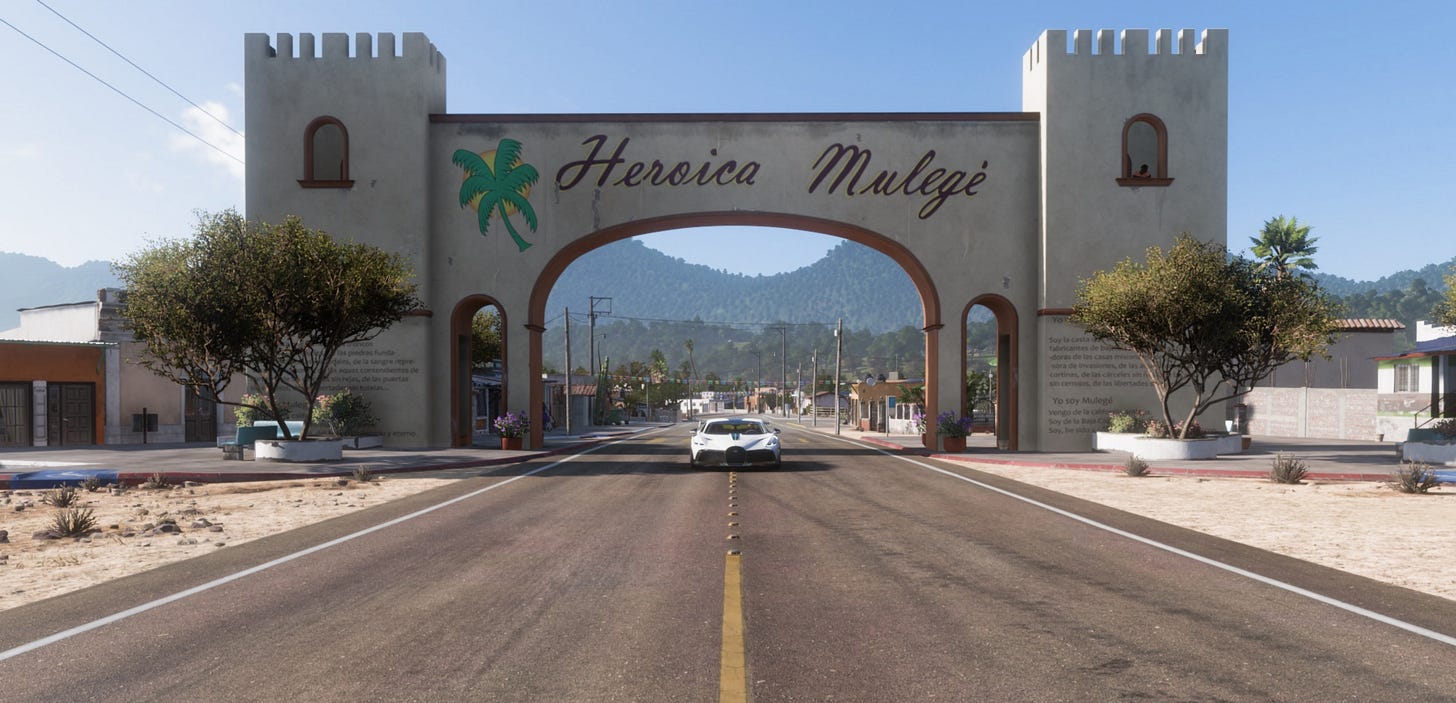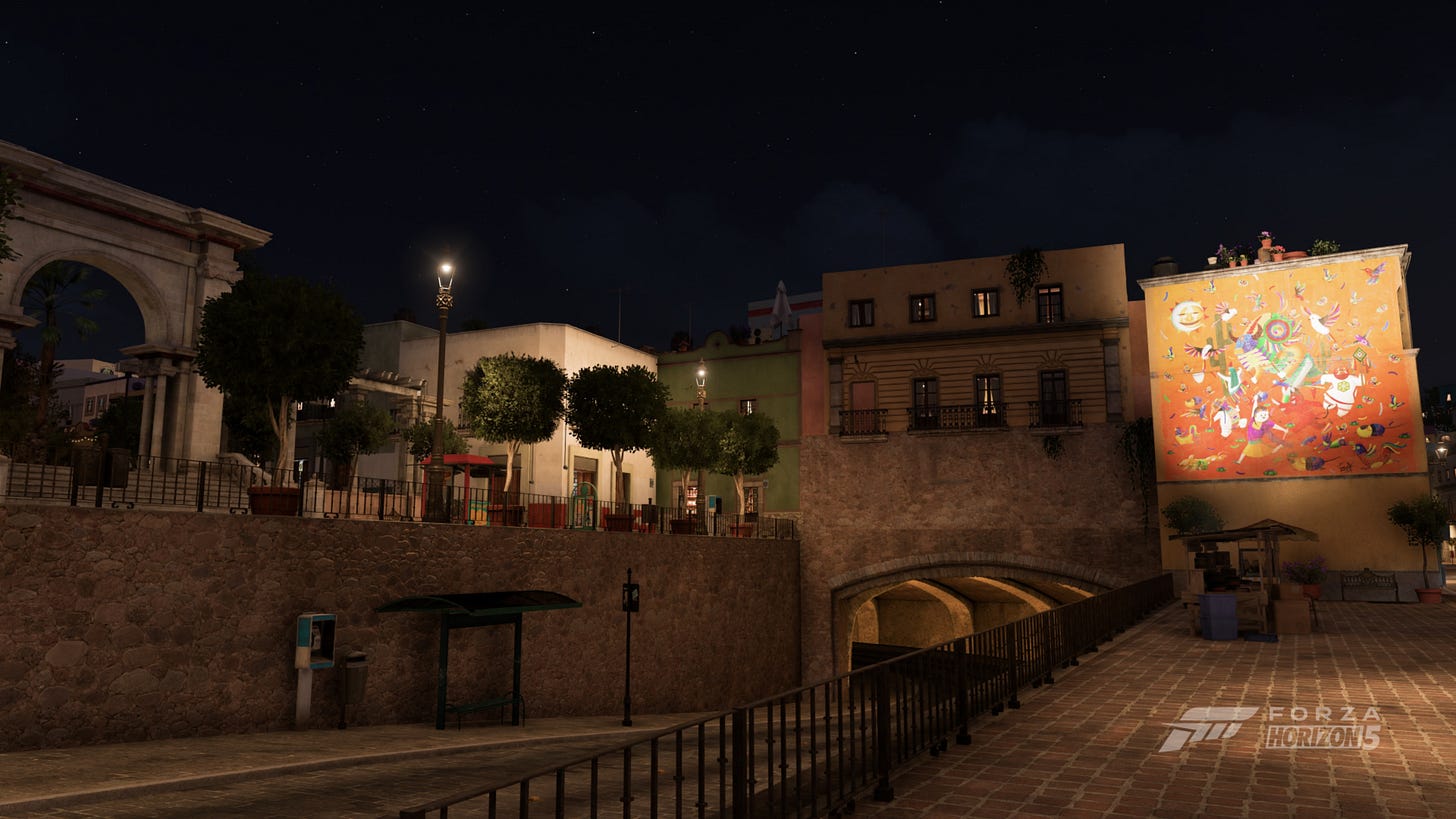The Amazing Architecture of Forza Horizon 4 and Forza Horizon 5.
I loved Forza Horizon 4 (FH4). It was my game of the year in a stacked year for video games. The atmosphere crafted was engaging and inspiring. It did for Edinburgh what Assassin’s Creed II did for Florence, Italy. I recall playing Assassin’s Creed II after living in Florence and realizing that the game doesn’t do the the streets of Florence justice, but it does something else. It creates the fantastical stereotypical Florence, Italy while capturing some of the realistic details of the city. Yes, it lacks the depth of the real place, but how could anyone replicate what took generations centuries to build? That level of generational understanding is just not possible for anyone in this current age to understand. The same thing is true for Edinburgh in FH4. The way the rain wets the cobblestones and typical brown stones used in Edinburgh reminds me of so many European cities I visited in the rain. The way the seasons affected the buildings was nostalgia fuel for me. It feels like revisiting parts of Europe if even just for a moment.
Forza Horizon 5 (FH5) is a nearly perfect version of the Forza Horizon formula, but I don’t think it hit me quite the same way FH4 did. FH5 does some interesting things with great Mexican architectural precedents, but it fails to create the sense of seamless transition from rural to urban or from microclimate to microclimate that was so successful in FH4. I felt like I could drive forever and totally immerse myself in Scotland; not so with the Mexican landscape. With that said, I want to touch on some things I think FH5 did incredibly well since it is still one of the most interesting architectural feats to grace video games this year (and any year a new one is released).
“Modeling” Interiors
When I was watching Skill Up’s review of FH5, he commented on fully modeled interiors. I was extremely pumped because I loved the way that FH4 addressed interiors. It used a sort of optical illusion that only breaks upon extremely close inspection (like photo mode zoomed all the way up to the doorway). The idea that any studio could put that much time into building interiors was incredible to me, and my instincts, that this was impossible, were right. They use the same amazing technique from FH4 in FH5. That said it seems like there is far more variety in interior typology. So much so that I can’t recall a single repeated interior, though I am positive they had to reuse some. In FH4 the same storefront and interior was repeated several times within a block or two of each other. The density of commercial buildings almost requires this type of efficiency. It is much easier to just whip out a few residential interiors and change how they work with exteriors to create new conditions in FH5. While it creates an urban fabric with more unique patterns, it also causes issues with the believability of a city’s urban fabric. I get what Playground Games was trying to do, but I think something between the repeated commercial of FH4 and the low density commercial of FH5 is probably the right balance.
Landmarks
One thing that FH5 does better in Mexico than FH4 did in Edinburgh are the treatment of landmarks. The landmarks are much more integrated with the driving landscape. Coming upon the Pyramids is inspiring and interactive in a way that the aqueducts in FH4 are not. The natural landmarks never fail to strike awe when I see them off in the distance or swinging around a turn. Within the urban and suburban conditions, the buildings are elegantly framed and scaled to give any drive a view of an beautiful skybox filled with great buildings. I highly recommend the Guanajuato quest that gives a quick overview of the architectural landmarks. While not super in depth (since you are trying to beat a time limit), it does give an idea of just how many amazing buildings are in this city and gives credit to the people that painstakingly modeled these structures.
Everyday Architecture
One thing that FH5 does far better than FH4 is the mundane architecture and infrastructure. The small little gatherings of buildings feel rich and authentic. When I come tearing through their four or five building village, I genuinely feel like I’m ruining the lives of the people that live there in the best way. It is also nice to not run into a backyard fence built of concrete destroying my multiplier every 5 seconds. Why does every home in Scotland need a solid stone fence? Except for Guanajuato, I can’t think of a massive fence wall built explicitly to give a back to something (this was very common in Edinburgh). The mundane architecture discovered on the side of a volcano or on the edge of a cliff feels honest and authentic.
If FH5 had nailed the transitions between climates and cities, I think the architecture would have exceeded the excellence of FH4. It’s a little disappointing, but a little exciting to see if Forza Horizon 6 can put it all together perfectly. Regardless of any feelings about the architecture, I want to urge anyone to play this game. It is one of my favorite games of the year and I highly recommend playing it whether you like racing games or not.
Gonna wrap this up with a medley of some cool modern buildings that didn’t really fit anywhere else from FH4 and FH5.





















